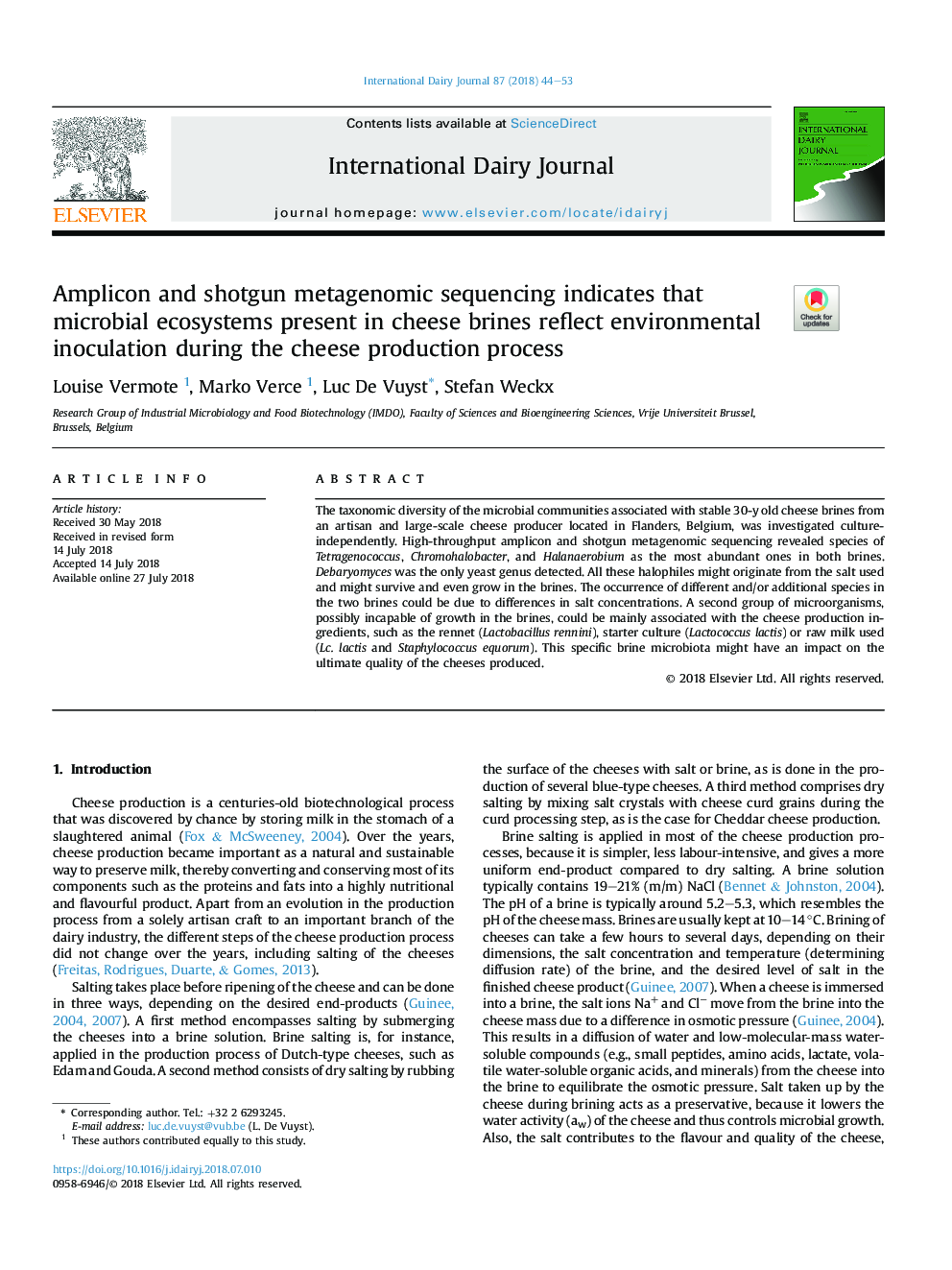| Article ID | Journal | Published Year | Pages | File Type |
|---|---|---|---|---|
| 9954640 | International Dairy Journal | 2018 | 10 Pages |
Abstract
The taxonomic diversity of the microbial communities associated with stable 30-y old cheese brines from an artisan and large-scale cheese producer located in Flanders, Belgium, was investigated culture-independently. High-throughput amplicon and shotgun metagenomic sequencing revealed species of Tetragenococcus, Chromohalobacter, and Halanaerobium as the most abundant ones in both brines. Debaryomyces was the only yeast genus detected. All these halophiles might originate from the salt used and might survive and even grow in the brines. The occurrence of different and/or additional species in the two brines could be due to differences in salt concentrations. A second group of microorganisms, possibly incapable of growth in the brines, could be mainly associated with the cheese production ingredients, such as the rennet (Lactobacillus rennini), starter culture (Lactococcus lactis) or raw milk used (Lc. lactis and Staphylococcus equorum). This specific brine microbiota might have an impact on the ultimate quality of the cheeses produced.
Related Topics
Life Sciences
Agricultural and Biological Sciences
Food Science
Authors
Louise Vermote, Marko Verce, Luc De Vuyst, Stefan Weckx,
